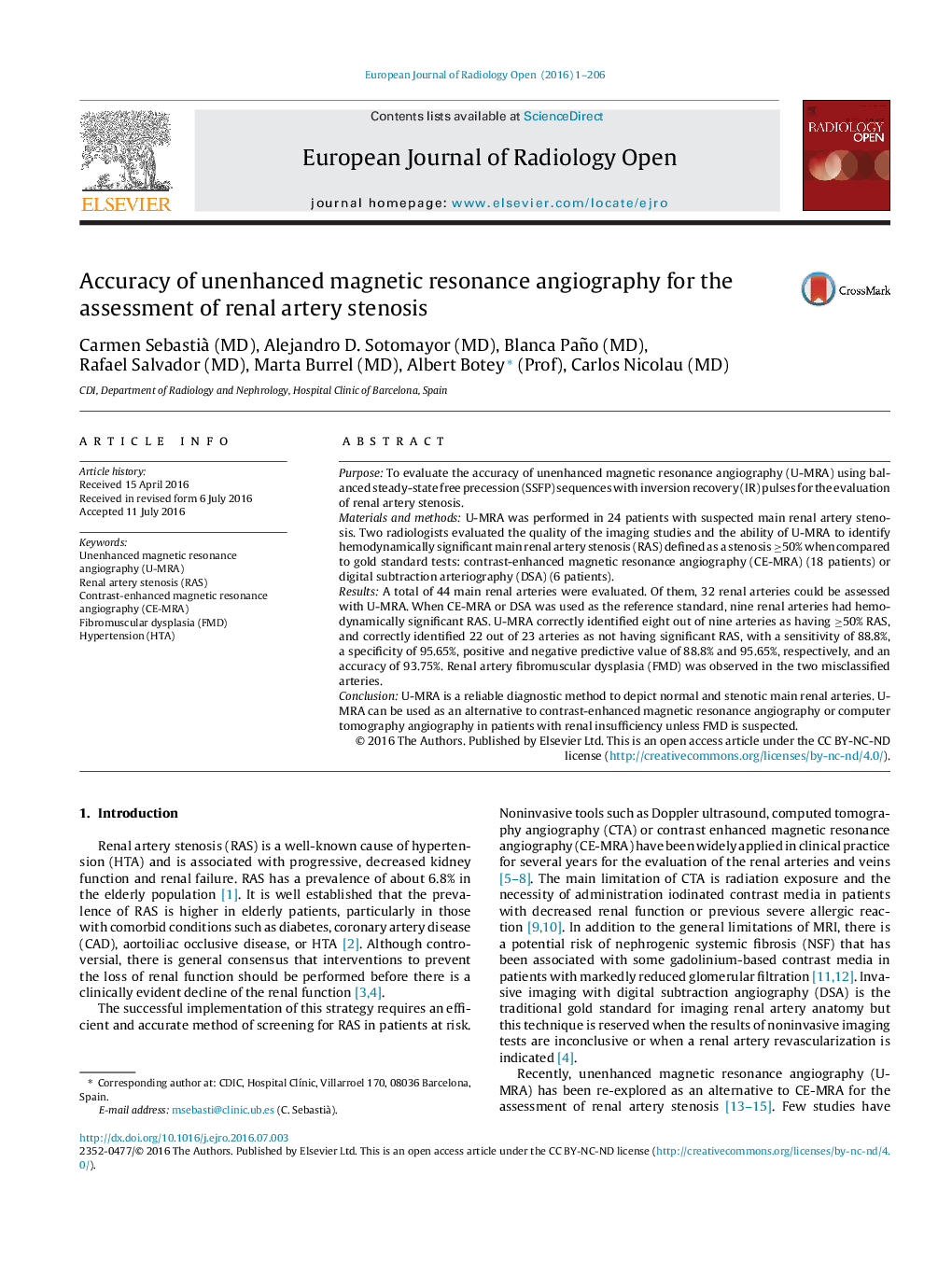| Article ID | Journal | Published Year | Pages | File Type |
|---|---|---|---|---|
| 4229674 | European Journal of Radiology Open | 2016 | 7 Pages |
PurposeTo evaluate the accuracy of unenhanced magnetic resonance angiography (U-MRA) using balanced steady-state free precession (SSFP) sequences with inversion recovery (IR) pulses for the evaluation of renal artery stenosis.Materials and methodsU-MRA was performed in 24 patients with suspected main renal artery stenosis. Two radiologists evaluated the quality of the imaging studies and the ability of U-MRA to identify hemodynamically significant main renal artery stenosis (RAS) defined as a stenosis ≥50% when compared to gold standard tests: contrast-enhanced magnetic resonance angiography (CE-MRA) (18 patients) or digital subtraction arteriography (DSA) (6 patients).ResultsA total of 44 main renal arteries were evaluated. Of them, 32 renal arteries could be assessed with U-MRA. When CE-MRA or DSA was used as the reference standard, nine renal arteries had hemodynamically significant RAS. U-MRA correctly identified eight out of nine arteries as having ≥50% RAS, and correctly identified 22 out of 23 arteries as not having significant RAS, with a sensitivity of 88.8%, a specificity of 95.65%, positive and negative predictive value of 88.8% and 95.65%, respectively, and an accuracy of 93.75%. Renal artery fibromuscular dysplasia (FMD) was observed in the two misclassified arteries.ConclusionU-MRA is a reliable diagnostic method to depict normal and stenotic main renal arteries. U-MRA can be used as an alternative to contrast-enhanced magnetic resonance angiography or computer tomography angiography in patients with renal insufficiency unless FMD is suspected.
